Abstract
Soil sediment enrichment cultures yielded a coryneform bacterium capable of growing in a mineral salts solution with acetylene gas as its only source of carbon and energy. Based on morphological and physiological traits as well as on cell wall analysis, the bacterium was characterized as a strain of Nocardia rhodochrous. Maximal growth rates (generation time 2.7 to 3.0 h) on acetylene were obtained at 5 to 20% acetylene, 25 to 40% oxygen, pH 7.0 and 26 to 28 degrees C. Yields (grams of dry cells produced per gram of acetylene consumed) ranged between 90 and 110%. N. rhodochrous exhibits a growth factor requirement for the pyrimidine moiety of thiamine. Acetylene utilization is not an obligate trait, and a wide range of alternate carbon sources is utilized. Ethylene is neither produced nor consumed. The only previous report on acetylene utilization appeared in 1932. The Mycobacterium lacticola strain described in that report strongly resembles N. rhodochrous.
Full text
PDF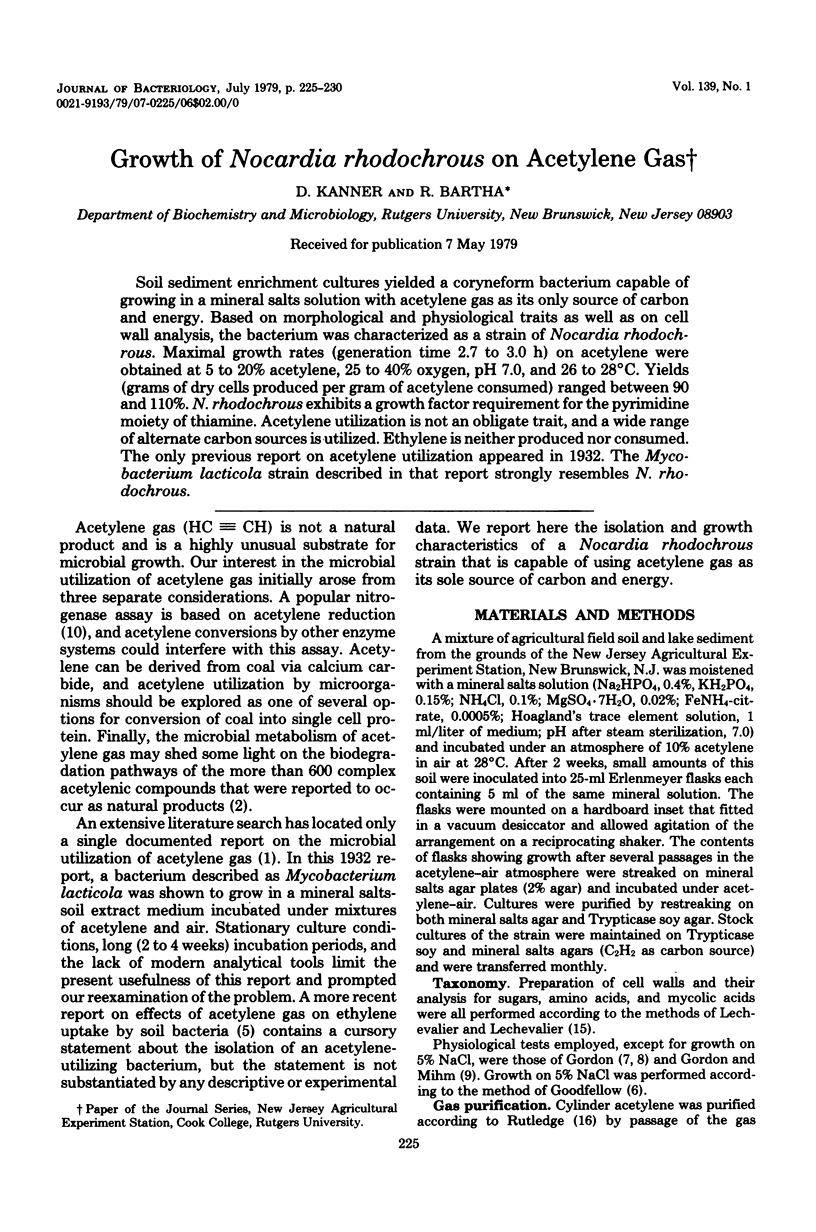
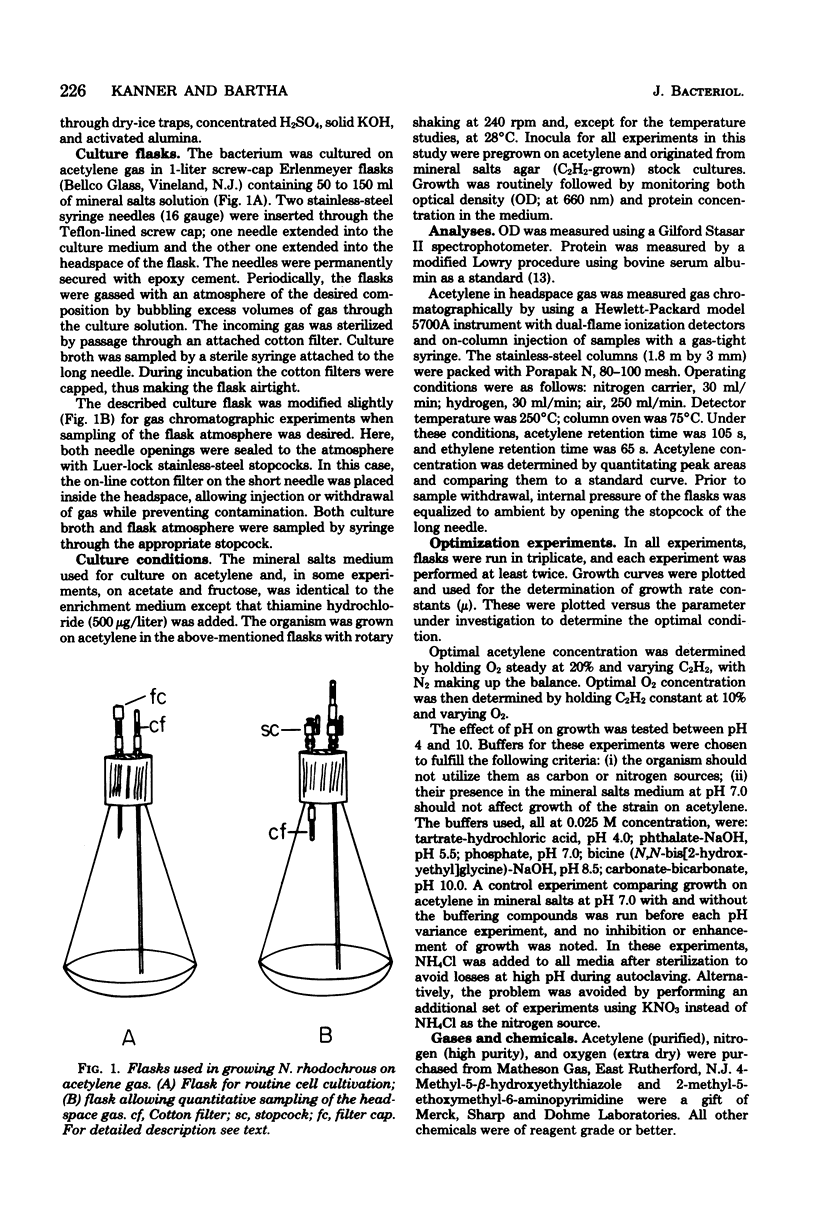
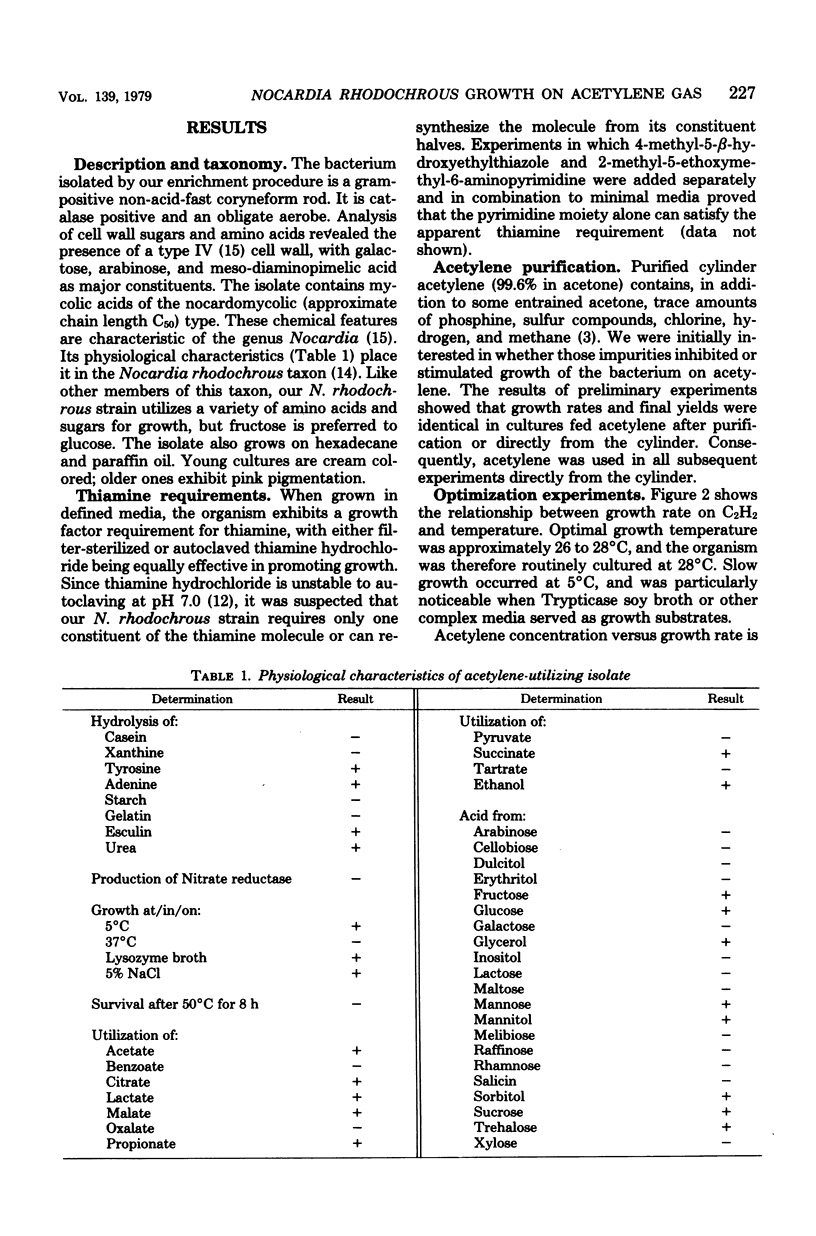
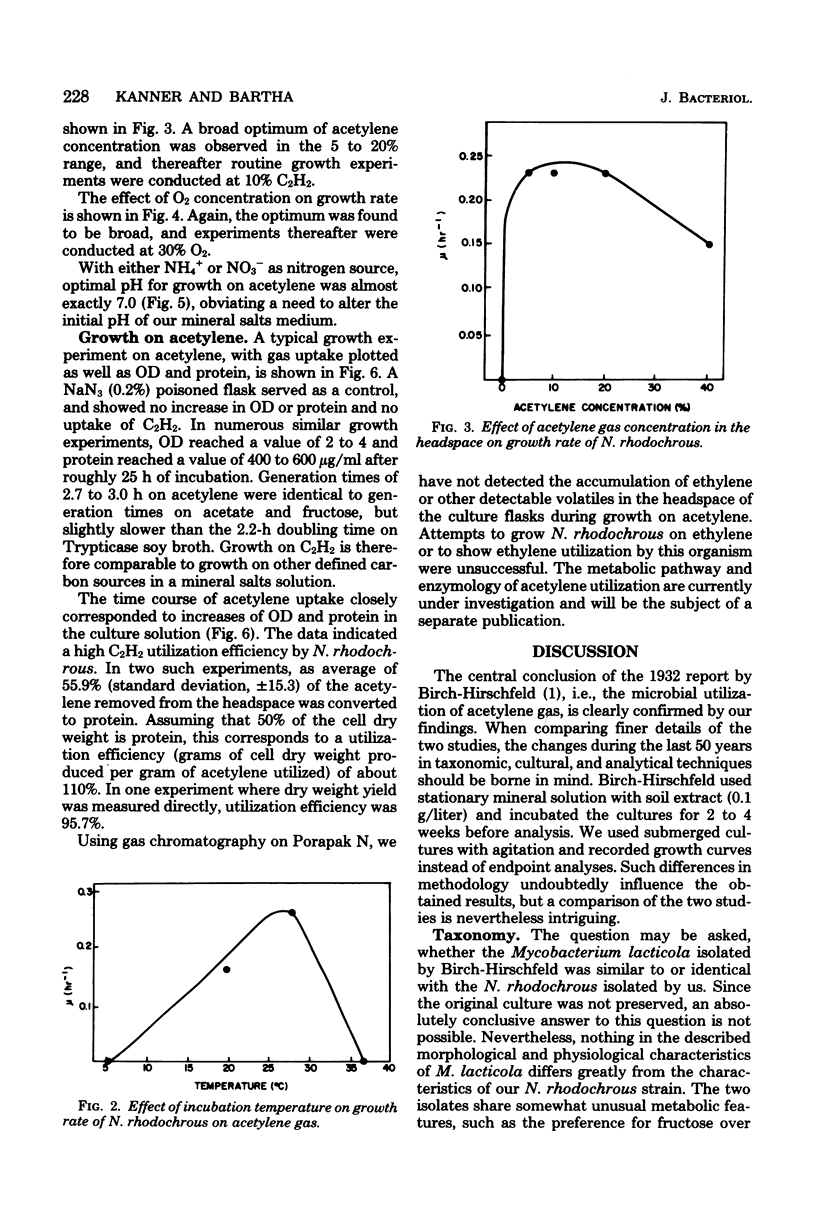
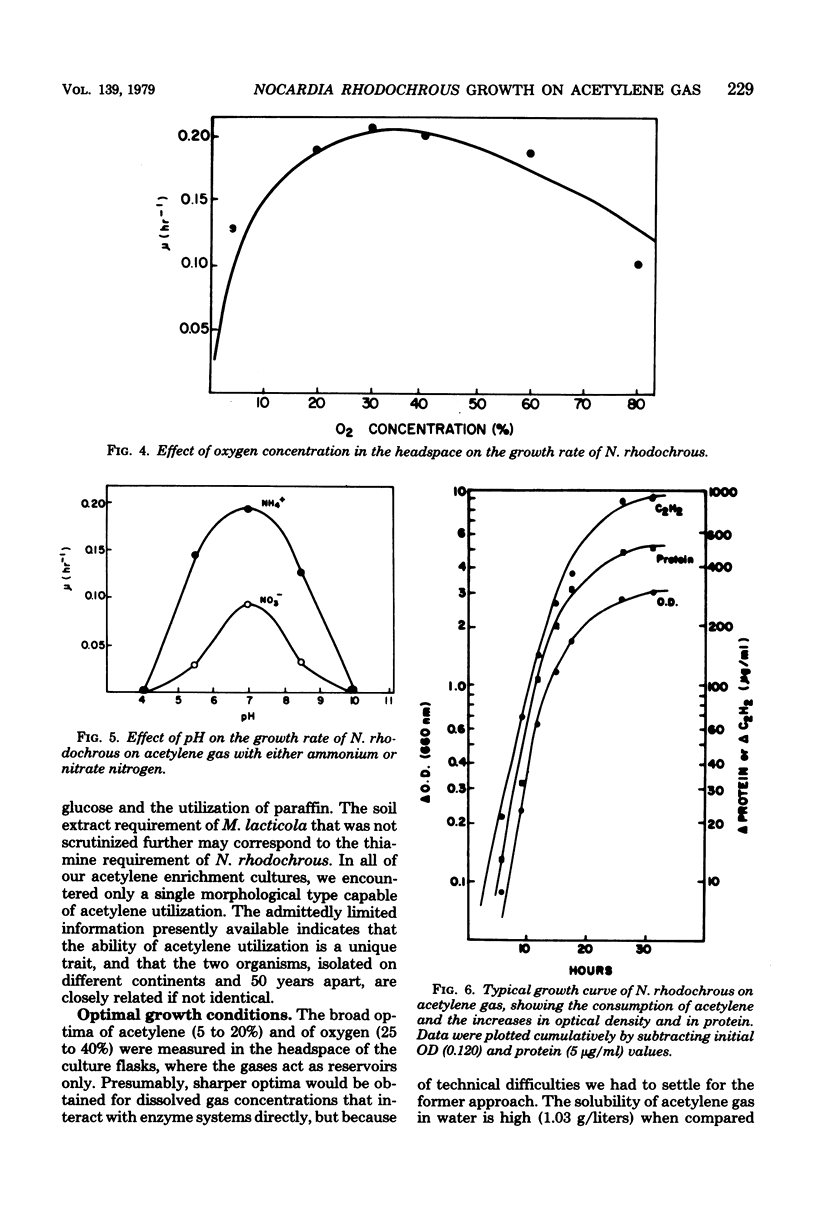
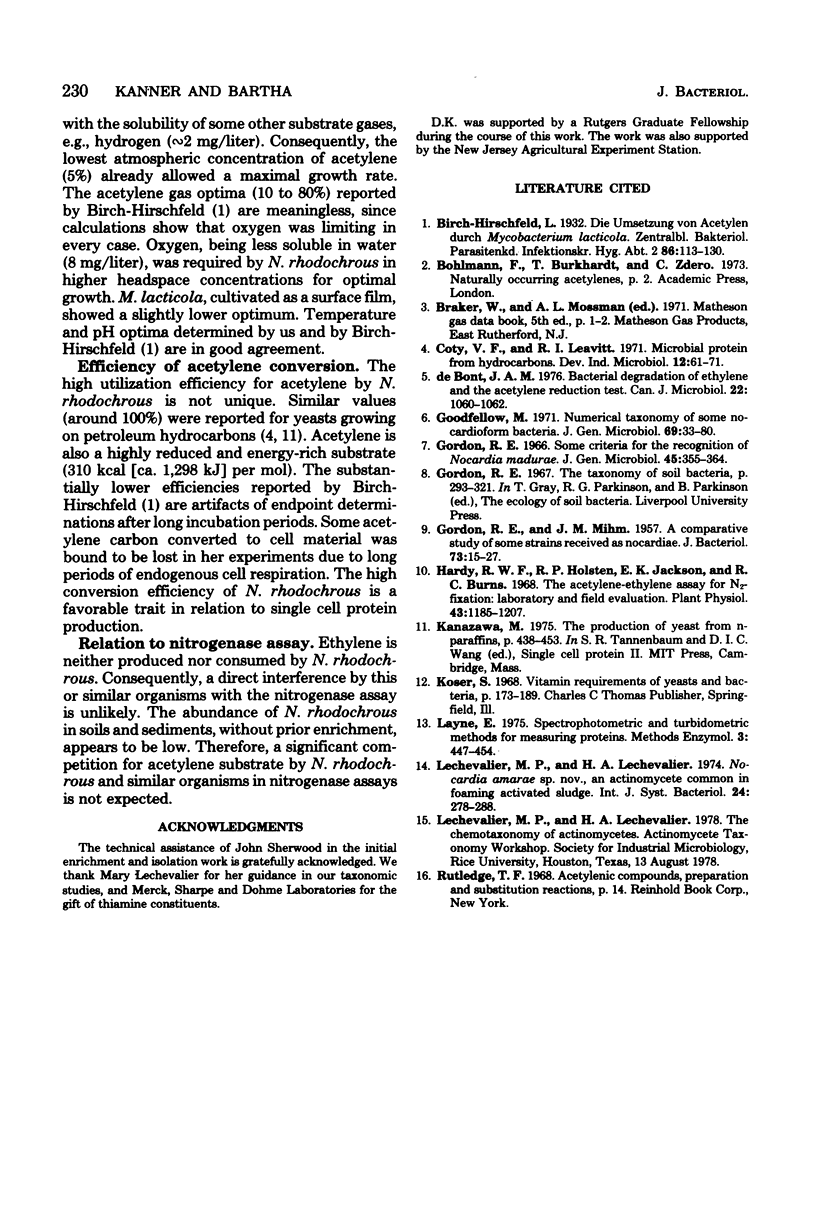
Selected References
These references are in PubMed. This may not be the complete list of references from this article.
- GORDON R. E., MIHM J. M. A comparative study of some strains received as nocardiae. J Bacteriol. 1957 Jan;73(1):15–27. doi: 10.1128/jb.73.1.15-27.1957. [DOI] [PMC free article] [PubMed] [Google Scholar]
- Goodfellow M. Numerical taxonomy of some nocardioform bacteria. J Gen Microbiol. 1971 Nov;69(1):33–80. doi: 10.1099/00221287-69-1-33. [DOI] [PubMed] [Google Scholar]
- Gordon R. E. Some criteria for the recognition of Nocardia madurae (Vincent) Blanchard. J Gen Microbiol. 1966 Nov;45(2):355–364. doi: 10.1099/00221287-45-2-355. [DOI] [PubMed] [Google Scholar]
- Hardy R. W., Holsten R. D., Jackson E. K., Burns R. C. The acetylene-ethylene assay for n(2) fixation: laboratory and field evaluation. Plant Physiol. 1968 Aug;43(8):1185–1207. doi: 10.1104/pp.43.8.1185. [DOI] [PMC free article] [PubMed] [Google Scholar]
- deBont J. A. Bacterial degradation of ethylene and the acetylene reduction test. Can J Microbiol. 1976 Jul;22(7):1060–1062. doi: 10.1139/m76-155. [DOI] [PubMed] [Google Scholar]


